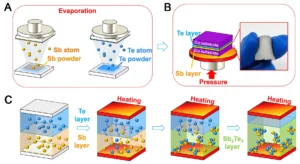Magnetism, a fascinating phenomenon in physics, has been studied for centuries and continues to captivate scientists and researchers with its intricate principles and applications. Derived from the ancient Greek word “Magnes,” referring to lodestone, magnetism has evolved from a mystical force to a well-understood aspect of the electromagnetic force. In this article, we delve into the fundamental principles, types, and applications of magnetism, unraveling the mysteries that make this force a cornerstone of modern physics.
Fundamental Principles:
Fundamental Principles:
Magnetism stems from the intrinsic magnetic moments of elementary particles, such as electrons, protons, and neutrons. The movement of these charged particles generates magnetic fields, creating the foundation for magnetic phenomena.
Magnetic Fields:
At the heart of magnetism lies the concept of magnetic fields. A magnetic field is a region in space where a magnetic force can be detected. It is represented by magnetic field lines, conventionally flowing from the north pole to the south pole. The strength of the magnetic field is quantified by magnetic flux.
Magnetic Materials:
Certain materials, known as ferromagnetic materials (e.g., iron, nickel, cobalt), exhibit spontaneous magnetic alignment of their atomic magnetic moments. This alignment results in the formation of magnetic domains, contributing to the macroscopic magnetisation of the material.
Types of Magnetism:
Diamagnetism:
In diamagnetic materials, atoms have no net magnetic moment, and their electrons are paired. When exposed to an external magnetic field, these materials develop a weak, negative magnetic moment in the opposite direction, causing repulsion.
Paramagnetism:
Paramagnetic materials have unpaired electrons, resulting in a net magnetic moment. When subjected to an external magnetic field, the material aligns its magnetic moments in the direction of the field, leading to attraction.
Ferromagnetism:
Ferromagnetic materials exhibit strong magnetic properties due to the alignment of magnetic moments in the same direction. This alignment persists even in the absence of an external magnetic field, contributing to the creation of permanent magnets.
Applications of Magnetism:
Electric Motors and Generators:
The interaction between magnetic fields and electric currents is exploited in electric motors and generators. In motors, electrical energy is converted into mechanical energy, while generators transform mechanical energy into electrical energy.
Magnetic Resonance Imaging (MRI):
In the field of medical diagnostics, magnetism plays a pivotal role in MRI machines. These devices use strong magnetic fields and radio waves to generate detailed images of the internal structures of the human body.
Magnetic Levitation:
The principles of magnetism are harnessed for magnetic levitation, where magnetic fields are used to counteract gravitational forces, enabling objects to float. This technology finds applications in high-speed trains and maglev transportation systems.
Data Storage:
Magnetic materials are extensively employed in data storage devices like hard drives and magnetic tapes. Binary information is encoded through the orientation of magnetic domains, enabling the storage and retrieval of vast amounts of data.
Conclusion:
Magnetism, a multifaceted force deeply ingrained in the fabric of our universe, continues to be a subject of extensive research and technological innovation. From the ancient compass to cutting-edge medical imaging, the applications of magnetism are pervasive and transformative. As physicists continue to unravel the complexities of this phenomenon, the potential for new discoveries and applications in the realms of science and technology remains boundless.




